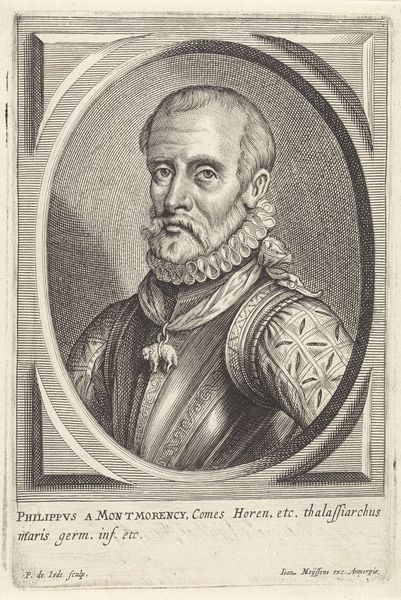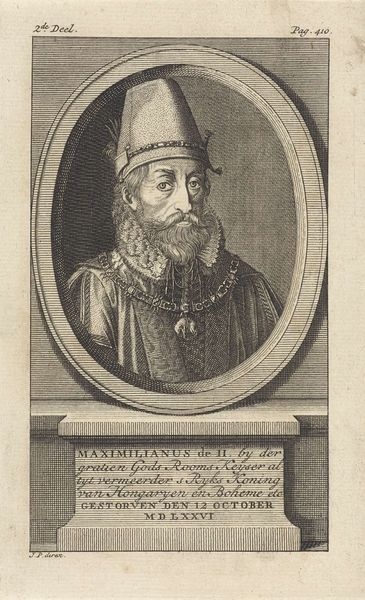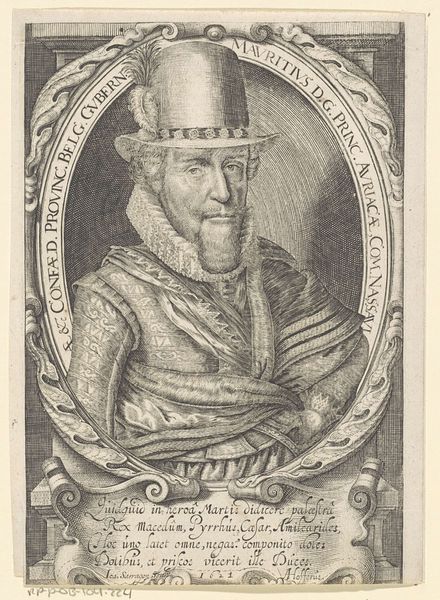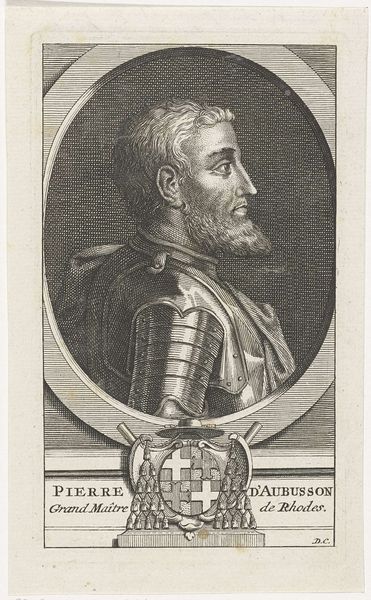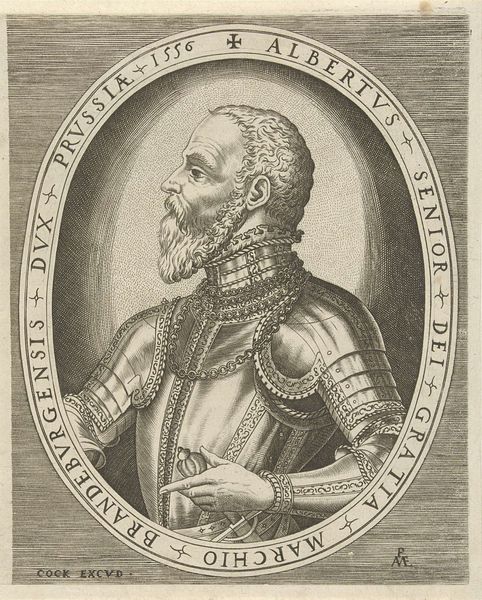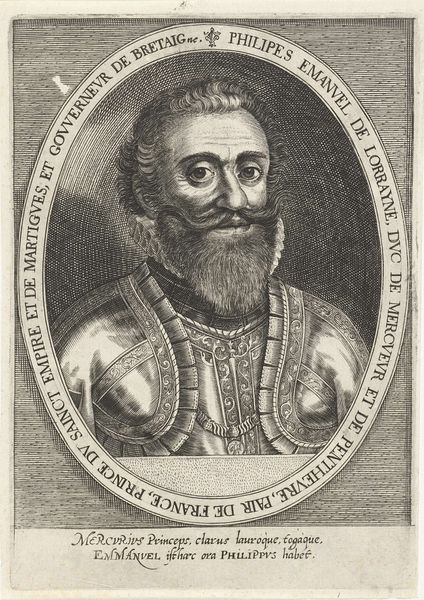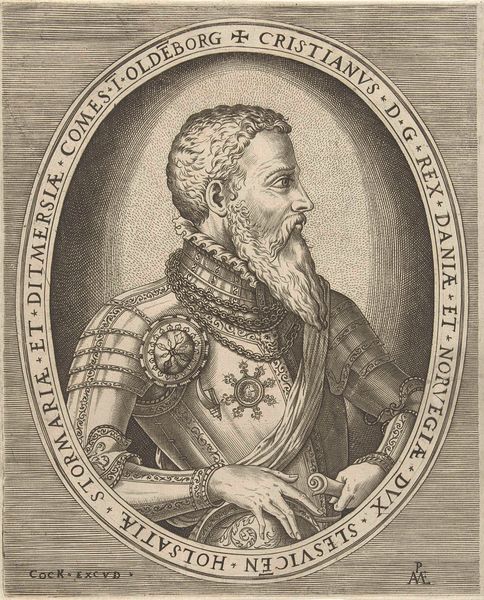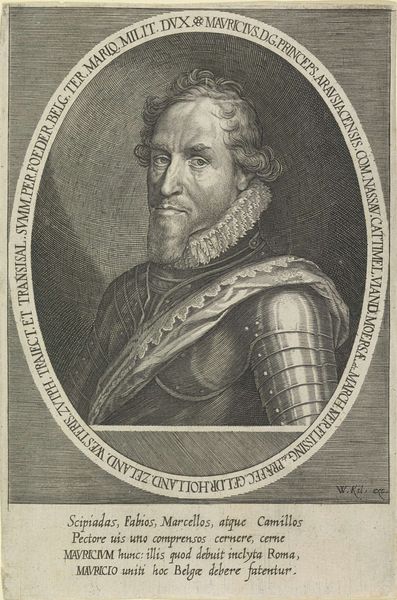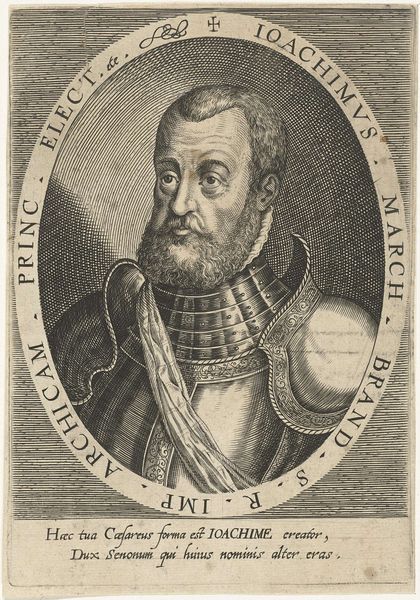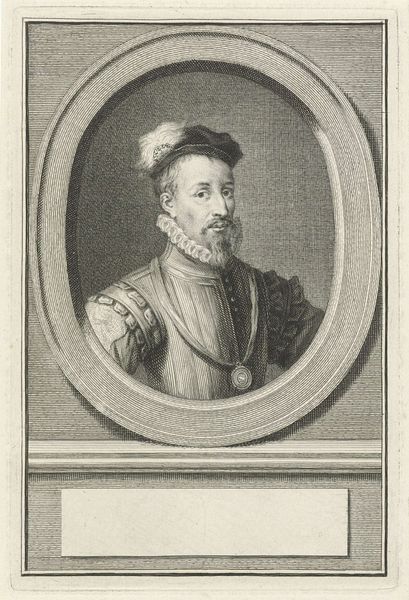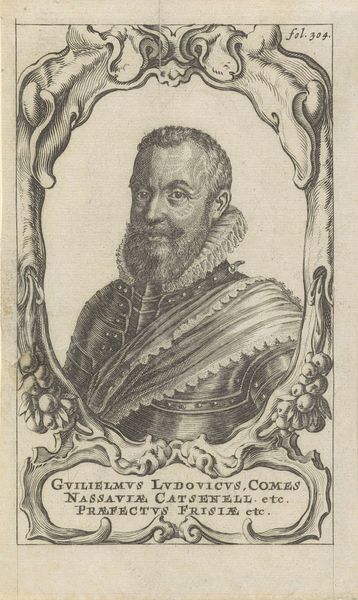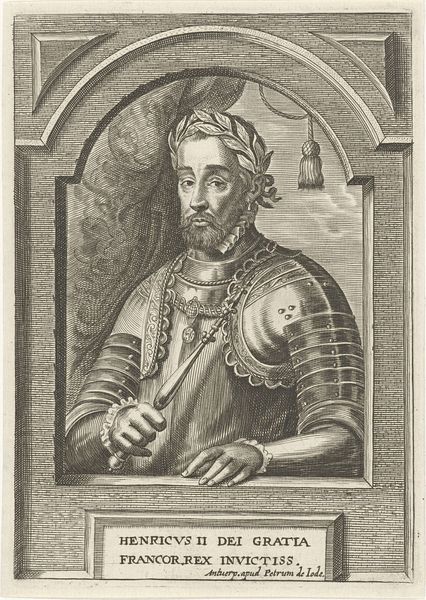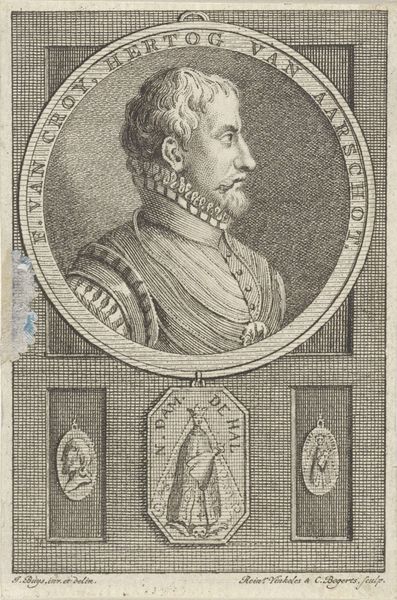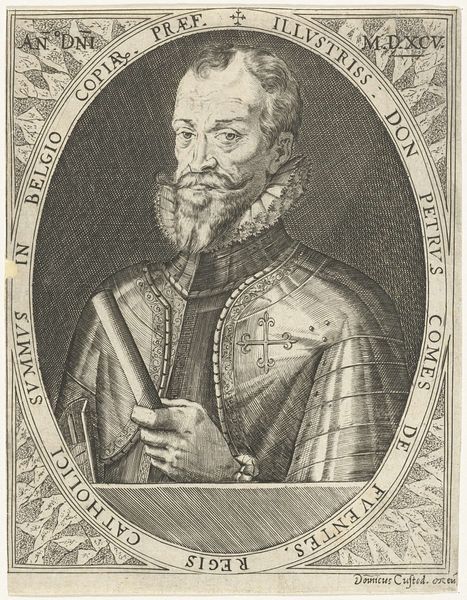
print, metal, engraving
#
portrait
#
baroque
# print
#
metal
#
old engraving style
#
figuration
#
line
#
history-painting
#
engraving
#
realism
#
historical font
Dimensions: height 185 mm, width 112 mm
Copyright: Rijks Museum: Open Domain
Editor: So, here we have a print from 1748 by Jan Punt titled "Portret van Hendrik II, koning van Frankrijk"—a portrait of King Henry II of France. It’s done as an engraving, so it's metal on paper, which feels significant in itself. The detail is impressive. What stands out to you when you look at this work? Curator: What grabs me is the process – the labour, skill, and access involved in producing this image. Consider the division of labour: who mined and refined the metal for the plate? Who designed and manufactured the tools for engraving? The print also challenges our notions of "original" art. Was it commissioned? If so, by whom, and for what purpose? What’s being circulated here beyond the King’s image? Editor: That’s a great point. I hadn’t thought about the actual *making* of the piece. I was just focused on Henry. So you’re saying that the metal and the engraving tools themselves hold a kind of historical weight? Curator: Absolutely. The very materials and methods speak volumes. The precision needed to create the lines, the implications of a readily reproducible image… This wasn’t an image for just anyone. What implications did the print have to be circulated in that context, instead of say a painting of the king available to a selected audience? This is carefully manufactured propaganda in a readily available way. It speaks to a different understanding of power, of presentation, doesn't it? Editor: I guess I hadn't fully considered the social context of a reproduced portrait and how radical that was in its time. Thank you! Curator: And I had been so fixated with the work required for engraving, I forgot to notice all of that text down there.
Comments
No comments
Be the first to comment and join the conversation on the ultimate creative platform.
